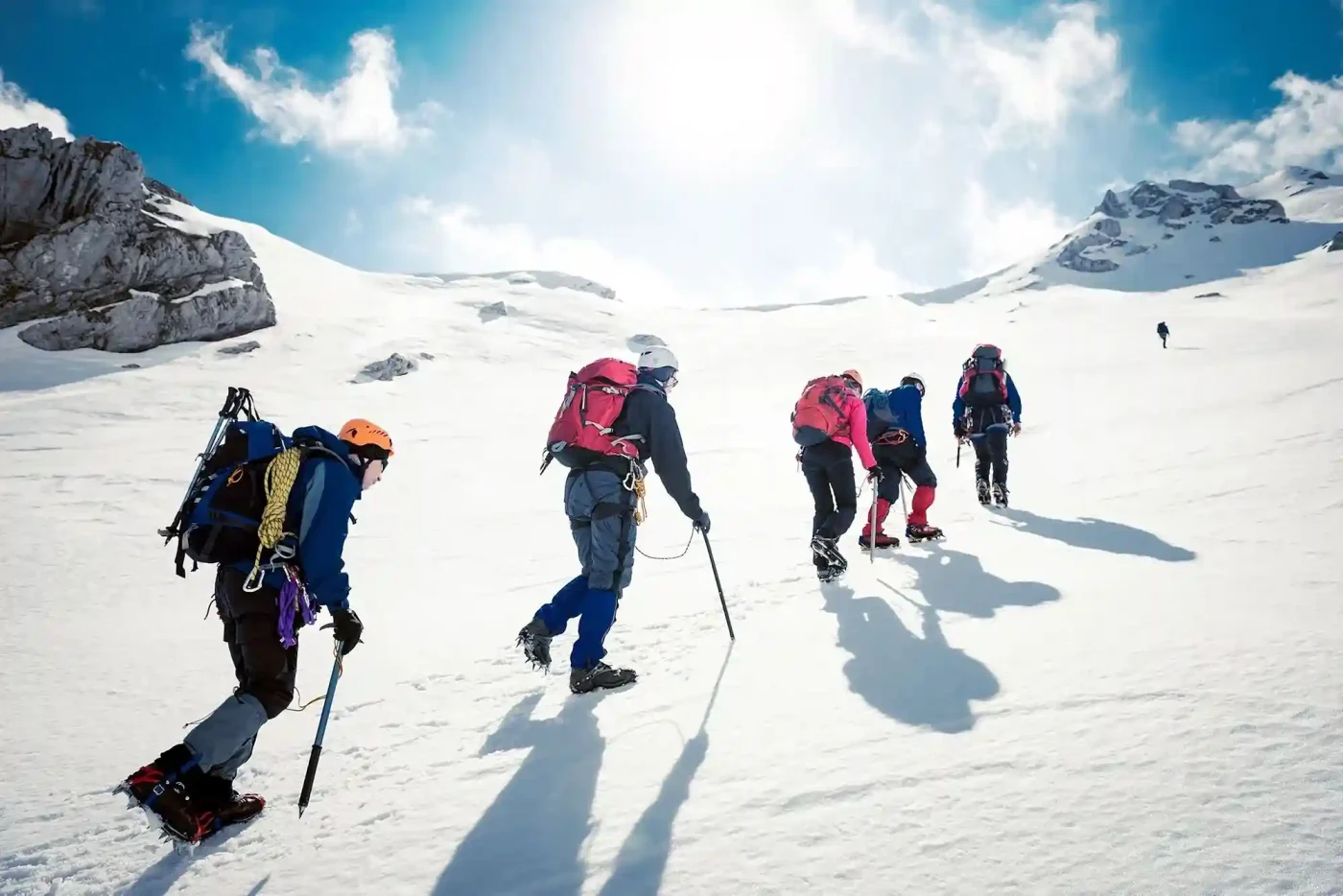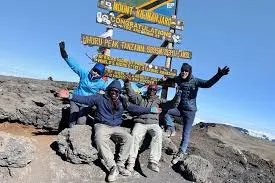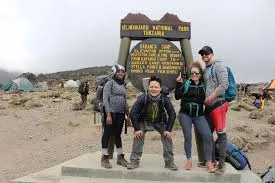Altitude Sickness Statistics on Kilimanjaro Climbs
Climbing Mount Kilimanjaro is a thrilling adventure, but altitude sickness is a real concern for trekkers. With Capable Africa Tours, understand the risks, statistics, and prevention strategies to ensure a safe and successful summit. This guide dives into detailed altitude sickness data, symptoms, and expert tips to prepare you for Kilimanjaro’s high-altitude challenge. From mild headaches to severe conditions, we’ll help you navigate the risks with confidence.
Plan Your Safe Climb Now
Understanding Altitude Sickness on Kilimanjaro
Altitude sickness, or Acute Mountain Sickness (AMS), is a common challenge when climbing Mount Kilimanjaro, which reaches 5,895 meters (19,341 feet) at Uhuru Peak. It occurs due to reduced oxygen levels and lower air pressure at high altitudes. While most climbers experience mild symptoms, severe cases can be life-threatening. Capable Africa Tours prioritizes safety with experienced guides, oxygen tanks, and gradual ascent routes to minimize risks. Below, we explore key statistics, symptoms, and prevention strategies to help you prepare.
What is Altitude Sickness?
AMS develops when your body struggles to adapt to lower oxygen levels above 2,500 meters. Symptoms range from mild (headaches, nausea) to severe (High Altitude Cerebral Edema [HACE] or High Altitude Pulmonary Edema [HAPE]). Proper acclimatization, hydration, and monitoring are critical to managing risks. Capable Africa Tours uses longer itineraries like the 8-day Lemosho Route to enhance acclimatization, boosting summit success rates to 85–90%.
Altitude Sickness Statistics on Kilimanjaro
Understanding the prevalence of altitude sickness is crucial for planning a safe Kilimanjaro climb. Below are quantitative and qualitative data points based on studies and operator reports, including insights from Capable Africa Tours’ experience guiding thousands of climbers.
| Metric | Value |
|---|---|
| Climbers Affected by Mild AMS | 50–75% (varies by route) |
| Severe AMS (HACE/HAPE) Incidence | 1–2% of climbers |
| Evacuations Due to AMS | 5–10% of climbers |
| Summit Success Rate (All Routes) | 65–85% (higher on longer routes) |
| AMS-Related Fatalities | 0.01–0.1% (10–15 annually) |
| Average Altitude of AMS Onset | 3,000–4,000 meters |
- Route Impact: Shorter routes like Marangu (5–6 days) see higher AMS rates (up to 75%) due to rapid ascents. Longer routes like Lemosho and Northern Circuit reduce risk to 50–60%.
- Climber Demographics: Younger climbers (20–30 years) and those with prior high-altitude experience report fewer symptoms. Fitness level alone doesn’t prevent AMS.
- Guide Expertise: Capable Africa Tours’ guides monitor oxygen saturation daily using pulse oximeters, catching early AMS signs.
- Weather Influence: Cold, windy conditions above 4,000 meters exacerbate symptoms, emphasizing the need for proper gear.
- Medication Use: 20–30% of climbers use Diamox (acetazolamide) to aid acclimatization, reducing mild AMS by 10–15%.
Symptoms of Altitude Sickness
Recognizing altitude sickness symptoms early can prevent serious complications. Capable Africa Tours trains guides to identify and respond to these signs promptly.
Mild AMS Symptoms
- Headache (most common, affecting 60% of climbers)
- Nausea or loss of appetite (40–50%)
- Fatigue or weakness (30–40%)
- Dizziness or lightheadedness (20–30%)
- Difficulty sleeping (20–25%)
Severe AMS Symptoms (HACE/HAPE)
- Confusion or altered mental state
- Loss of coordination or inability to walk straight
- Shortness of breath at rest
- Coughing up frothy or bloody sputum
- Chest tightness or congestion
Action: If severe symptoms appear, immediate descent is critical. Capable Africa Tours carries oxygen tanks and emergency kits to stabilize climbers during evacuation.
Watch: Staying Safe from Altitude Sickness on Kilimanjaro
See how Capable Africa Tours ensures climber safety with expert guides, oxygen monitoring, and acclimatization-focused itineraries in this video.
How to Prevent Altitude Sickness on Kilimanjaro
To prevent altitude sickness on Kilimanjaro, ascend slowly, giving your body time to adjust. Stay well-hydrated and eat light, high-carb meals. Listen to your body if you feel severe symptoms, don’t push on. Using the “climb high, sleep low” strategy and considering altitude medications can also help. Capable Africa Tours incorporates these strategies into every Kilimanjaro trek to maximize safety and summit success.
Prevention Tips
- Choose Longer Routes: Opt for 7–9 day routes like Lemosho or Northern Circuit for gradual ascents, reducing AMS risk by 15–20%.
- Hydrate Regularly: Drink 3–4 liters of water daily to combat dehydration, a key AMS trigger.
- Eat High-Calorie Meals: Consume 4,000–5,000 calories daily to fuel your body at high altitudes.
- Pace Yourself: Follow the “pole pole” (slowly) mantra to avoid overexertion.
- Consider Diamox: Consult a doctor about acetazolamide (125–250 mg daily) to speed acclimatization.
- Monitor Symptoms: Report headaches or nausea to guides immediately for early intervention.
- Pre-Trek Training: Practice hiking at elevations above 2,500 meters if possible.
Capable Africa Tours’ Safety Measures
Our treks include:
- Daily health checks with pulse oximeters
- Oxygen tanks and emergency kits on every climb
- 1 guide per 2 climbers for personalized monitoring
- Training on AMS symptoms before departure
- Evacuation plans with rapid descent protocols
Route-Specific Altitude Sickness Risks
Different Kilimanjaro routes have varying AMS risks due to ascent profiles. Capable Africa Tours recommends routes with better acclimatization for safer climbs.
Route Comparison
| Route | Duration | AMS Risk | Summit Success |
|---|---|---|---|
| Lemosho | 7–8 days | Low (50–60% mild AMS) | 85–90% |
| Northern Circuit | 9 days | Lowest (45–55% mild AMS) | 90–95% |
| Machame | 6–7 days | Moderate (60–70% mild AMS) | 80–85% |
| Marangu | 5–6 days | High (70–75% mild AMS) | 60–70% |
| Rongai | 6–7 days | Moderate (60–65% mild AMS) | 80–85% |
Climb Kilimanjaro Safely with Capable Africa Tours
Ready to conquer Kilimanjaro without altitude sickness worries? Join Capable Africa Tours for expertly guided treks with safety-first protocols, oxygen monitoring, and acclimatization-focused itineraries. Book now for a safe, unforgettable summit!
- 85–90% summit success with longer routes
- Daily health monitoring with pulse oximeters
- Oxygen tanks and emergency kits included
- Experienced guides trained in AMS response
- Customizable itineraries for all fitness levels
Limited spots for safe Kilimanjaro climbs — book now to secure your adventure!
Plan Your Climb Now


